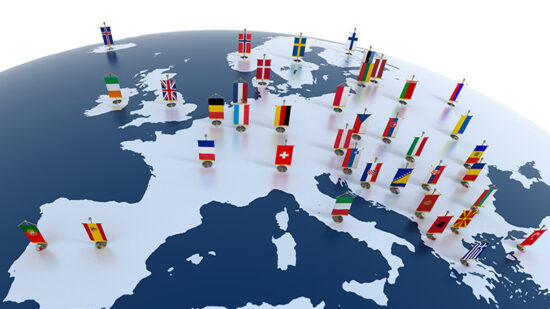In 1877 the German geographer Ferdinand von Richtofen named these ancient routes the Silk Road. Today fast-moving capital flows have replaced the plodding trade caravans of antiquity.
The financial Silk Road (FSR) symbolises the shift of economic gravity from West to East and will seal the economic prosperity of the East and it will hasten the economic decline of the West.
It originated from the geopolitical developments then unfolding across Europe and Asia twenty years ago when the signal event of the fall of Berlin Wall economically enfranchised some three to four billion wage-hungry workers in what we now dub the emerging markets.
New growth
The result effectively quadrupled the capitalist labour force and unleashed a new accelerated phase of economic development as, freed from the shackles of state socialism, these nations began to economically catch up with the West.
This all has two major implications for Western investors.
Forget the silly idea of a ‘global savings glut’, because the FSR highlights the surplus of redundant capital in the West and implies a falling real return on capital. Over the past decade, the yield on US index-linked Treasuries has skidded ever lower from over 3% to under 2%.
Second, new currencies will emerge along the FSR.
World economic history is the history of the rise and fall of global currencies. The death of a reserve currency is often drawn out, as sterling proves, but make no mistake the dollar is now following a similar long decline. Hampered by swollen debts, the major Western countries will be forced to create monetary inflation. Fed Chairman Ben Bernanke’s “Deflation: Making Sure ‘It’ Doesn’t Happen Here” speech in 2002 proved to be the bell that rang in a phase of more rapid dollar decline.
Like the similar tensions between the dollar and the Yen and deutschemark in the mid-1960s, the latest tensions between America and the Asian creditor economies will trigger a change in global monetary arrangements. In short, like the Europeans before them, the Asians are fed up with accumulating stockpiles of ever-depreciating greenbacks.
Slow but unaviodable
When the world’s preferred standard of value loses favour investors initially switch into the safety of gold or silver. The next more interesting phase sees the rise of new paper units, based on economic and sometimes military dominance, viz. the euro. The Chinese renminbi is slated to become the new global monetary standard. Its rise may be slow, but it will be remorseless.
Thus, we are seeing the last throws of the so-called ‘Bretton Woods II’, post-1997 currency arrangements where leading emerging markets source to accumulate stockpiles of US dollars to safeguard their parities. Now, led by China, we expect them to allow their real exchange rates to appreciate.
This will hasten the flow of capital along the FSR. It will underpin the attractions of the emerging markets, and it will encourage more and more investors to consider currency, specifically emerging market currencies as a new asset class. Over the next twenty years, investors in emerging markets should find that a sizeable part of their gain come from rising currencies, as well as rising stock prices. Start travelling East.







